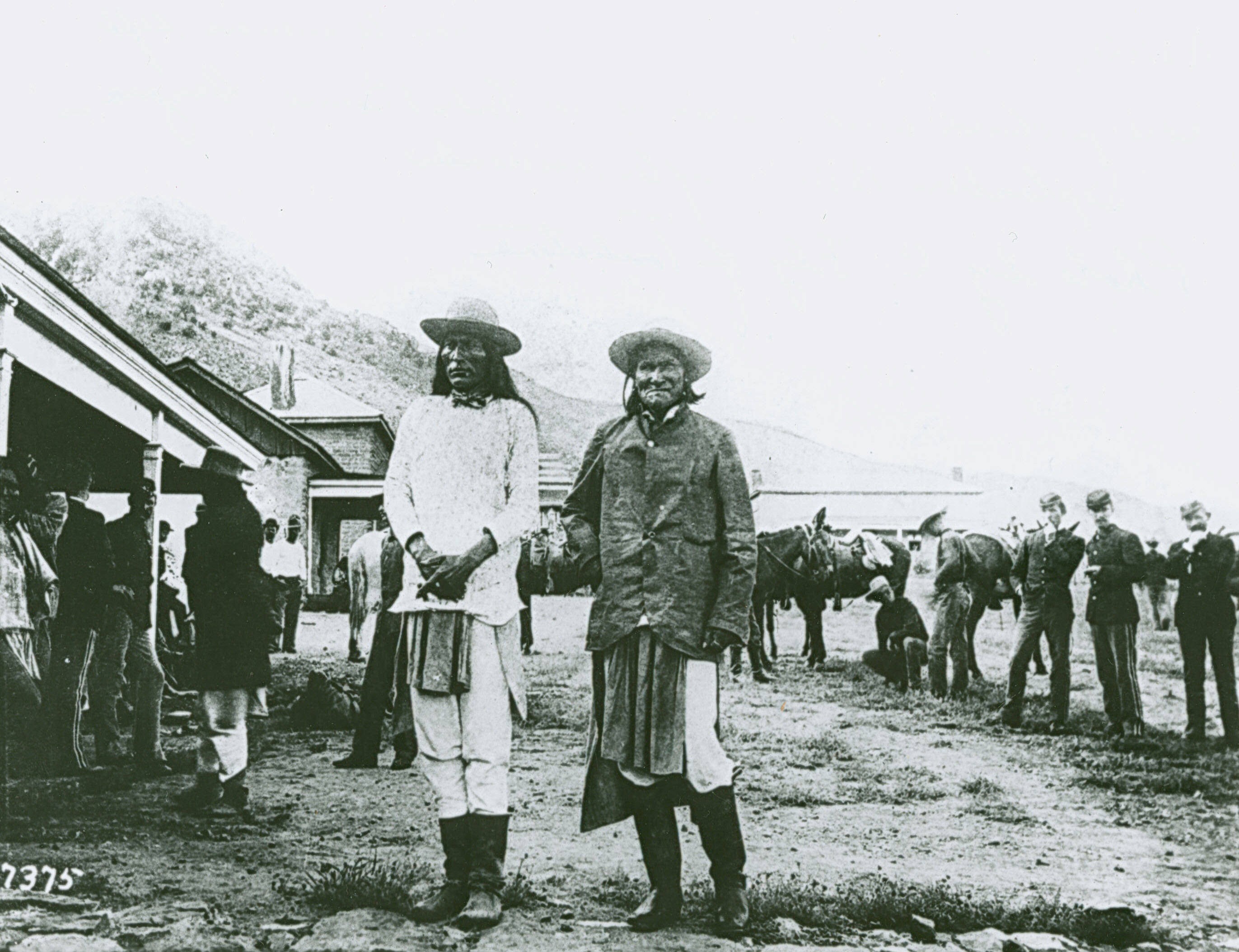The Army Almanac of 1950 states that on March 21, 1886, Geronimo, the Chiricahua Apache leader, surrendered to U.S. Army Captain Marion Maus. There should, however, be an asterisk next to this entry. Ten months earlier, Geronimo, Natchez, and a small band of men, women, and children had left the reservation in Arizona and struck out for northern Mexico and an attempt at freedom. General George Crook, the commanding general in the Arizona Territory, sent out troops in pursuit and then scouts after Geronimo crossed the border. Maus, accompanying the scouts, made initial overtures to Geronimo, who agreed to consider surrendering. Crook himself came down to Sonora, Mexico, where he discussed with Geronimo over two days, March 25-27, how he might peacefully surrender. Meantime, however, a local merchant provided the Apaches with some mescal. This brought about reconsideration and the band left camp on March 28, instead of surrendering.
In mid-April, Crook was replaced in command of the department by General Nelson Miles, who started a new pursuit of Geronimo and his band, lasting almost six months as they crossed back and forth between Mexico and Arizona. Elements of four cavalry regiments, Indian scouts, and other troops were employed in the U.S., as well as 200 Mexican soldiers on the other side of the border. After overtures by Lieutenant Charles Gatewood and Captain Henry Lawton and a direct negotiation with General Miles himself, Geromino and his band surrendered on September 4, in Sonora, Mexico. They decided to stop their actions in part because they were dispirited to learn that their families were being removed by the government and sent east to Florida.
Geronimo's surrender was one of the culminating points of the long succession of campaigns to have Native American tribes accept the authority of the Federal government. Geronimo and his band were among the last of the Indians of the Southwest to resist the efforts of the Army to bring peace to the area. In the process, the best known frontier officers of the period came to respect his stealth, resourcefulness, and tenacity as a fierce opponent.
In less dramatic ways, the campaign against him and the aftermath of his capture also reflected the changes the Army faced as it shifted from a frontier constabulary force to a modern military institution. One was in the professionalization of the Army. Many senior leaders of this era had won commissions and rank as volunteer officers in the Civil War and hard campaigning in the Indian Wars. Miles lacked a formal military education or any schooling beyond high school, but had distinguished himself by intelligence, leadership, and the ability to endure the hardship of long marches as well as any Indian. As the challenge of the Indian frontier faded away, new challenges made professional schooling more important.
Technology also played a part in the campaign against Geronimo. The Signal Corps contributed signal towers atop high ground, employing semaphore flags and the flashes of the heliotrope. These innovations in Indian fighting provided observation, surveillance, and communication to augment the traditional scouts and the written messages carried by mounted couriers.
The aftermath of the campaign reflected changing opinions about the future of the Native Americans. While the campaigns created opportunities for active service and career advancement, reflective officers who served on the frontier recognized that the Army often served as a buffer between the Indians and the interests of miners, farmers, ranchers, and the railroads. While they did not condone the violence that rebellious war bands employed to resist, such officers recognized the difficult position the native peoples were in.
One alternative was to provide academic and vocational education to captured warriors, and by extension, to their children. Initially done with captives of the Staked Plains campaign of the 1870s, the program evolved into the Carlisle Indian Industrial School, administered by an Army officer for the Bureau of Indian Affairs, where children from many different Indian nations, were brought to Carlisle Barracks, Pennsylvania, to learn skills which could be put to use in the broader economy. Among these were some family members of Geronimo's Band.
ABOUT THIS STORY:Many of the sources presented in this article are among 400,000 books, 1.7 million photos and 12.5 million manuscripts available for study through the U.S. Army Military History Institute (MHI). The artifacts shown are among nearly 50,000 items of the Army Heritage Museum (AHM) collections. MHI and AHM are part of the: Army Heritage and Education Center (AHEC), 950 Soldiers Drive, Carlisle, PA, 17013-5021.
Related Links:
A Working finding Aid for the Nelson A Miles papers
A Working Bibliography of MHI Sources: George Crook






Social Sharing